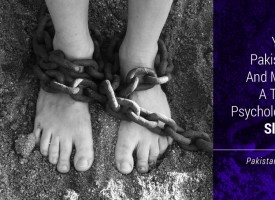Pakistan is blamed for the miseries of Afghanistan ever since its creation and today it has become a fashion for our pseudo intellectuals to bash Pakistan in regard to its Afghan policy without questioning the Afghanistan’s Pakistan misadventures since 1947.
While intellectuals and opinion-makers from religious right to secular left are critical of Pakistan’s historical stance on Afghanistan over various issues, there seem to be a total consensus inside Afghanistan in regard to their aggressive anti-Pakistan policies.
Many in Pakistan would be surprised to know that Afghanistan was the only country to oppose the creation of Pakistan and later it’s entry to the UN (Hasan 1962:16), thus became the sole initiator of hostility with a new born Nation on the basis of 1893 Durand Line Agreement.
Afghanistan has several times tried to seize Pakistan’s western provinces of Balochistan and Khyber Pakhtunkhwa, which is Pakistan’s 67% territory. Much have been said about strategic depth policy of Pak-Army, but it’s impertinent to note that Afghanistan has been a base-camp for anti-Pakistan subversion and safe haven for terrorists by first sheltering and training Baloch separatists since 1948 and fueling up Pashtunistan movement to incite hate and terror.
All these events are part of Afghanistan’s Pakistan policy long before the inception of the word Strategic depth. It’s unfair to blame Pakistan for reacting to the Afghan aggression. One would be either totally naïve or stupid to not oppose such an aggression which may cost us 67% of our total land area and 31% population.
Justification of Strategic Depth;
Strategic depth as for what I have learned isn’t really an Indian centric policy but rather a rational solution to have a peaceful region which doesn’t want Afghanistan to be political brothel for rest of the world. In the light of the facts as mentioned above, it’s now evident that Afghanistan is to be blamed for its current miserable condition.
Strategic depth is a reactionary policy to Afghanistan’s anti-Pakistan policies hence it’s fair to say that those who are critical of this reactionary policy must then convinces Afghanistan to mind its own business.
Durand Line and Afghan Pride;
One of the major problems with Afghanistan is its Nationalism that is filled with ethnic-hatred and historical mythologies which keep a large segment of Afghan society away from sanity, thus it gets even tougher for them to comprehend the sensitivities of issues like Durand line and Pashtunistan.
In 1947, Kabul was not ready to accept the Durand Line, marked in 1893. The Line, that bifurcated Afghanistan and British-India, according to the English version of document which is basically the original version of agreement, Durand line would be regarded as an international border and its status won’t be changed thus Pakistan was morally and legally compelled to inherit North Western provinces after a formal referendum. Unjustifiably, many Afghans regard it as an insult to Afghan-pride.
Insecure Afghan Identity;
According to my study of Afghan nationalism, I have come up to a conclusion that it is filled with more senseless ethnic-pride than substance. For example, the very definition of Afghan identity alienates 52% of their population and only exclusively accommodates Pashtuns.
For example, there are about 12 Ethnic groups in Afghanistan other than Pashtuns who are technically not Afghans because Afghans are originally referred Pashtuns or to be more specific, indigenous peoples inhabiting the lands between the Amu Darya and the Indus River where as rest of the ethnic communities have separate cultural identities and distinct histories from each other specially Tajiks and Hazaras who are the second and third dominant community in Afghanistan have always justifiably opposed this exclusiveness of Afghan Identity hence it has now become a national dilemma of Afghanistan to integrate its own people under 1 national umbrella.
Afghan insecurities about its own identity have always played an instrumental role in shaping its anti-Pakistan policy in order to unite its people. Since last 15 years, Afghanistan has used its propaganda machinery to demonize Pakistan in-front of its citizens. According to Afghan perspective, it could unite its people by using Pakistan as their boogeyman for all their problems including their senseless national identity.
Pakistan’s apologetic behavior;
Afghan Prime Minister, Muhammad Hashim, in an interview with the Statesman, went candid when he expressed Afghan’s misplaced nationalism: ‘if an independent Pushtonistan cannot be set up, the frontier province should join Afghanistan. Our neighbour Pakistan will realise that our country, with its population and trade, needs an outlet to the sea, which is very essential (qtd. in Emadi 1990: 1515).
Pakistan on the other side resorted to a total silence; as a matter of fact overshadow Afghanistan’s aggressive behavior by calling it a brotherly Muslim Country.
Pakistan continued to ignore such Afghan policy statements that Kabul, even under a pro-Pakistan Taliban regime, refused to acknowledge the Durand Line as an actually existing border (Rashid 2001: 254).
While Pakistan remained silent over such provocative claims, there were occasions when it did give an effective shut up call which actually worked very well for instance, Pakistan’s first prime minister, Liaquat Ali Khan, defiantly stated that, ‘The Government of Pakistan is willing to establish friendly relations with the Royal Government of Afghanistan, they cannot be expected forever to continue pleading for friendship, and while they have not given up hopes that sanity will dawn on the rulers of Afghanistan, they must reiterate in clear unambiguous language that not one inch of our land will be surrendered to anybody’ (qtd in Chopra 1974: 313).
That came as a very effective policy statement from Pakistan which politically countered Afghanistan’s senseless claims however; political statements aside, Afghans have also resorted to military invasions of Pakistani territories but each time their aggression met with a strong Pakistani response.
In 1949, Pakistan Air Force bombed the Afghan sponsored terrorist camps in FATA to subdue an unrest led by Ipi Faqir. Parts of Afghanistan also came under attack. This provoked a strong Afghan reaction. For the first time, during 1949-50, border clashes between the two countries were reported, Pakistan’s Paramilitary forces with the help of patriotic Tribal militias eradicated Afghan terrorists from the Pakistani region and forced Afghans to surrender their occupational call. (Hasan 1962: 16).
However, tensions reached new heights in 1955 when Pakistan announced One Unit, whereby the provinces of West Pakistan were amalgamated into one administrative. The Pakistan embassy in Kabul and Pakistani consulates in Kandhar and Jalalabad were ransacked and both countries withdrew diplomatic staff (Chopra 1974: 315, Hasan 1962: 16, Emadi 1990: 1515).
That came as a surprise and completely undermined the very concept of Nation-states when a country cancels diplomatic relations with another country due to its internal political scenario, only Afghanistan could behave in such a manner because of its misplaced nationalism that has a very little room for rational approach.
In 1960, Afghanistan force- landed two Pakistan Air Force aircrafts at its Kandhar base, alleging that they were violating Afghan airspace. In a strongly worded note, Kabul alleged that 30 such violations had occurred earlier. Pakistan regretted the incident and termed it an accidental violation of Afghan airspace. In the heat of the moment, Kabul announced it would divert the Kabul river, jeopardizing the Rs 60 million Warsak project. Before the dust could settle, The Afghan army, in the guise of irregulars, had attacked Pakistan’s tribal areas. According to sources, the Mohmand tribe, in league with Charamangi and Sularzai tribes, repulsed the attack (Chopra 1974: 315-317).
Apart from occasionally responding appropriately to Afghanistan’s misadventures, Pakistani intellectuals and politicians have resorted to adopt an apologetic behavior towards Afghanistan for God knows what reason. According to all these events, it has always been Afghanistan who initiated the hostilities and played an instrumental part to destroy Pakistan’s nationhood.
Our newspapers, television screens and speeches are all filled with us blaming ourselves without any rational approach towards the issue, infect the contemporary definition of rationalism according to some pseudo Pakistani intellectuals is to unjustifiably criticize Pakistan’s reaction without questioning Afghanistan’s behavior as a hostile neighboring state.
State sponsored Terrorists.
Much has been said about State Sponsored Terrorists when it comes to referring Pakistan in the negative light but it’s a known history that State of Afghanistan has inflicted more damage to Pakistan by exporting ethnic and sectarian terrorism inside Pakistan.
At the time when Sardar Daud ousted his cousin, King Zahir, Pakistan was also undergoing a crisis. The Bhutto government dismissed the NAP-government in Balochistan and the NAP-government in NWFP resigned in protest. The NAP leadership was jailed. As a result protests were invoked in Kabul. Daud’s nationalist credentials caused worry in Islamabad, Afghanistan came on forefront to arm and assist Baloch and Pashtun nationalists.
Sardar Daud played ethnic cards to subvert and destroy peace and unity within Pakistan, Baloch separatists mainly from Marri and Mengal tribes took refuge in Afghanistan where they were not only armed to teeth but were indoctrinated with hate for Pakistan.
This provoked Bhutto who then welcomed anti-Daud exiles, including Gulbadin Hekmatyar and from there Pakistan gave a befitting reply to Afghan proxy war by assisting the tribal uprising in Panjshir in 1975 (Ali 1983: 130, Emadi 1990: 1516).
Due to tit for tat policy of Pakistan, Sardar Daud vowed to establish Greater Afghanistan, which included parts of Iran and Pakistan. As a result the Shah of Iran also viewed him and Afghanistan’s misadventures with suspicion. During the Daud period there were border clashes between Iran and Afghanistan.
As it is widely believed that you reap what you sow, Sardar Daud known as the Red Prince in Afghan left circles, was brutally butchered by Afghan communists. He was assassinated after Pak-Afghan-Iran relations were normalized following hectic diplomatic efforts. His Pashtun nationalism succumbs to Afghan communism and did not save him from being butchered by his fellow Afghani comrades.
Refusing to learn from blunders, the PDPA government which came to power also vowed to establish a Greater Afghanistan from Oxus to Abasin/Pamir to Bolan and refused to acknowledge the Durand Line as an international border (Emadi 1990: 1516).
Pakistan was bound to protect itself;
Until early 1980s, while Afghanistan’s Pakistan policy was obsession with Pakistan’s destruction, it took a new turn by the end of 1980s. Pakistan had no choice but to support Mujahideen’s regime post-Naguib government, Islamabad (in fact, the Pakistan military) began to defend Pakistan from Afghanistan from further destabilization.
Of course, this very counter-offensive policy of Pakistan which became necessity to safeguard its existence as a nation-state is now commonly known as strategic depth, and many misguidedly believed that its aim was to keep Afghanistan a reinforcement base against possible Indian invasion. Like it was mentioned earlier, many pseudo intellectuals established an anti-Pakistan narrative for responding to Afghanistan’s aggression, shamelessly many in Pakistan also call it a move to wage or sustain Jihad in Kashmir. Reality is very much contrary to this notion, if Afghanistan and India could refrain themselves from sandwitching Pakistan in-between their proxy wars, Pakistan wouldn’t really have to bother them with its own cards.
Afghanistan is hardly known for intelligent planning and it still insisted upon its idiocy to frequently terrorize Pakistan. Ironically, neither the Pashtun nationalism, massively funded and advocated by Afghans, nor the Baloch separatism were able to achieve any of their objectives. Pashtuns on Pakistani side remain happily affiliated with Pakistani Identity and opposed the racist rants of Pashtun Nationalist politicians while Baloch separatists remained weak and misguided despite of foreign support to cause any problem to Pakistan’s territorial unity.
Concluding remarks:
1) Afghanistan’s ‘hostility’ to Pakistan on the basis of Durand Line, especially during the period of 1947-1988 has been attributed to the machinations of India and Russia (see, for instance, Hasan 1962, Tahir-kheli 1974).
2) Kabul’s Pakhtonistan policy is a failed scheme which particularly under King Zahir’s and Sardar Daud’s command was planted due to domestic reasons. According to Emadi (1990) for instance, says that while anti-Pakistan euphoria could help detain Afghan opposition activists as ‘Pakistani agents’, Pakhton nationalism could fuel up Tajik and Hazara nationalisms as it discriminately deny equal rights to non-Pushton ethnic groups. Pakistan on the other hand can also use the similar logic to fragment Afghan state into pieces hence it would be better for Afghans to halt their ethnic-movements in Pakistan.
3) Counter-Productive Afghan Narratives need to be changed for their own good. The very approach that Pakistan will give up 58% of its territory and some 32% of its population is not just a naïve but an idiotic approach, the sooner it changes, the better.
Secondly, you don’t own Pashtuns in Pakistan, it would be much better if you invest your efforts in owning your dysfunctional and fragmented society rather than caring about Pakistanis. Pashtuns today are part of almost every walk of life in Pakistan be it Sports, Entertainment, politics, Military, culture etc, as a matter of fact, the very Identity of Pashtun has very well merged with Pakistan’s overall religious and regional Identity.
4) Pakistan shall survive but Afghanistan won’t. If One goes by mainstream accounts, Afghanistan believed that Pakistan would not survive and it staked its claims over the Pashtun belt in Pakistan in view of any future eventuality (see, for instance, Hasan 1962).
Unlike Afghanistan, Pakistan has strong institutions, a viable state as well as diplomatic strength to not only defeat Afghanistan politically, militarily and even in the game of proxy wars but also consolidate its victory by further destroying the fragile state of Afghanistan as this has been witnessed in our recent history so it would be much better for Afghanistan to accept its reality, recognize Pakistan as one of its neighboring countries and not a proxy turf for Afghans.
The fact of the matter is: Afghanistan was never strong enough to dismember Pakistan on the other side Pakistan can inflict more damage to Afghans that they can’t sustain for long.
Afghan demands regarding the Durand Line and support for ‘Pakhtonistan’ was a legitimate cause of concern for newly-independent Pakistan, subsequent aggressive Afghan policy, especially 1974 onwards, has been counter-productive.
Meddling in Pakistani affairs 1980s onwards has contributed to self-destruction of Afghanistan therefore, Pakistan by all means has a pluralistic Identity and social structure, strong institutions such as Army and Federal govt that can face and pacify Indo-Afghan sponsored Baloch separatists and Pashtun nationalists but Afghanistan won’t be able to resist any ethnic and sectarian war within its own country if Pakistan is provoked again. (See, Baloch 2014).
It is imperative that Afghanistan radically reviews its Pakistan policy. Disengagement with Durand Line issue, give up of Pashtun card are the only ways to rebuild a prosperous Afghanistan.








I am a pukhtun from peshawar and I fully agree with the author. The afghan governments have always tried to sow the seeds of ethnic hatred in the minds of ordinary pukhtuns against pakistan. The so called nationalist parties ANP and PKMAP are in reality chauvinist and racist parties and have been traditionally sponsered by the various afghan governments. I think pakistan needs to become more open on the expansionist designs of the afghan rulers
Nice article about Afghan and pak elations… And credit goes to author…
thank u dear. being history student and sympathy tvards pak I’m pleased to knw the passive policy of pak and agresssion of afganstan.ur article proved highly informative to me about relation btveen pak and Afghan.
finally someone stating the truth of why there is so much hatred among the afghans for Pakistan . Sir u are on point ! Please let the world know . As a pakistani living in the states I was always the target of such hatred from Afghans . Thank you . I will pass this on .
Fahad kahut u have done a marvellous job, commendable by all means , despite being a patriotic pakistani i was blinded by propoganda about strategic depth, thanks for opening my eyes, pls give me the references and try to publish the article in a national/international newspaper.
Thank you, I will consider your advise.
A great article, too bad its on a little known website.
Thank you very much. You can spread the word ;)
Thank you very much.
You can spread the word so that more people can read.
Very well said, most people forget also what we’ve done for Afghans in the the 80’s. Took them in like our own and not refugees. And that’s not even mentioning the kind of drugs, guns and crime that was acquired with them.
Entire governments of theirs have passed with specific Pakistan policies that were nothing but hostile, for example, Daoud Khan’s Pashtunistan policies.